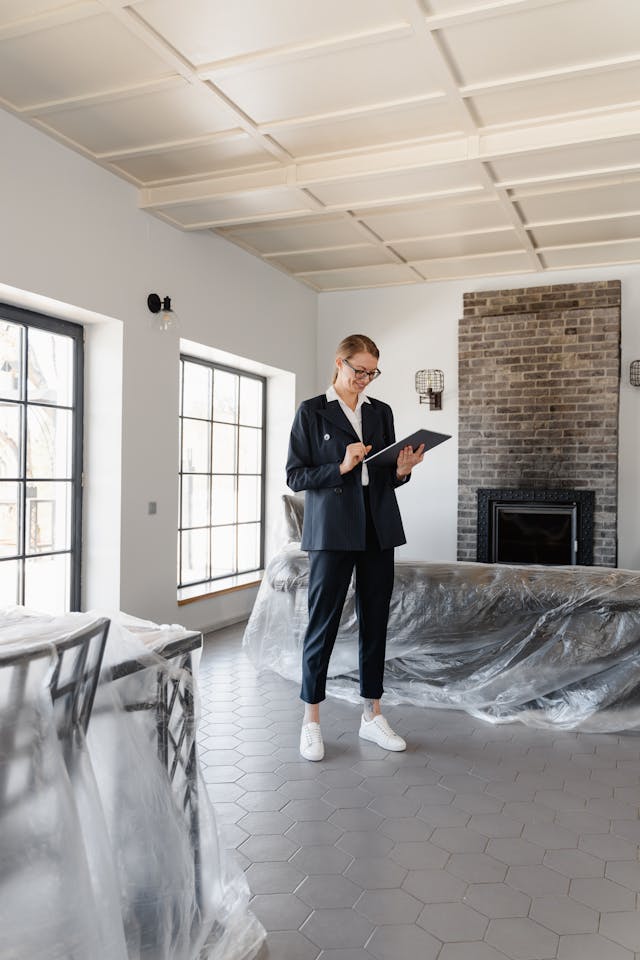As a property manager, one of your most critical responsibilities is ensuring owners receive their payments on time and accurately. Whether you manage a few properties or dozens, paying owners involves several moving parts, including rent collection, expense tracking, and making sure the correct amount gets disbursed.
This guide will break down the most efficient methods for paying owners, the best timing practices, and how to ensure accuracy in every payment, helping you maintain smooth operations and keep property owners happy.
1. Choose the Best Payment Method
The first step in paying owners is choosing the right method of payment. Different owners may prefer different options, so it’s a good idea to offer a variety of methods. Here are the most common ways property managers can pay owners:
Direct Deposit (ACH)
Direct deposit is the most popular and efficient method. It allows property managers to transfer funds directly to the owner’s bank account. This method is fast, reliable, and requires minimal manual effort, especially if set up through property management software.

Pros:
- Fast and reliable (usually processed in 1-2 business days).
- Reduces the risk of lost or delayed payments.
- Easy to automate, saving time on manual transactions.
Cons:
- Requires accurate owner bank information.
- Some banks charge fees for ACH transfers, though they are generally low.
Paper Checks
While less common nowadays, some property owners still prefer receiving paper checks. This method requires printing and mailing checks, which is slower and more labor-intensive than electronic methods.
Pros:
- Familiar method for some owners.
- No need for owners to provide banking information.
Cons:
- Slower payment process (can take days to arrive by mail).
- Increased risk of checks getting lost or delayed.
- Requires manual effort to print, sign, and send checks.
Wire Transfers
Wire transfers are ideal for urgent payments or for owners who live internationally. While this method is faster than ACH, it usually comes with higher fees, especially for international transfers.
Pros:
- Extremely fast, usually processed within hours.
- Reliable for international payments.
Cons:
- Higher fees for both the property manager and the owner.
- May require more manual tracking and effort to initiate.
Property Management Software Payments
Many property management platforms (e.g., AppFolio, Buildium, or Rentec Direct) have integrated payment systems, allowing for automatic owner payments. These platforms streamline the entire payment process, combining rent collection, expense tracking, and disbursements in one place.
Pros:
- Automates the entire payment process, reducing manual errors.
- Integrates with rent collection, making it easy to calculate owner payouts.
- Provides detailed reports and transparency for owners.
Cons:
- Software subscription fees.
- Some learning curve if you’re new to using property management software.
2. Establish a Payment Schedule
Consistency in payment timing is critical for maintaining owner trust. Property managers typically disburse payments to owners on a monthly basis, but the specific timing can vary depending on when rent is due and collected.
Best Practices for Payment Timing
- Monthly Payments: Most property managers pay owners once per month after rent is collected. A common schedule is to disburse payments by the 5th or 10th of each month to allow time for rent to clear and for any repairs or other expenses to be deducted.
- Mid-Month Payments: Some property managers opt to make payments in the middle of the month (15th-20th), allowing additional time for any late payments to come in or to resolve maintenance expenses before disbursing funds.
- Custom Schedules for Multiple Properties: For owners with multiple properties, it’s best to consolidate payments into one monthly disbursement. This simplifies tracking for both you and the owner.
- Clear Expectations: Always communicate the payment schedule to owners upfront and ensure they understand any delays (e.g., due to weekends, holidays, or tenant late payments). Setting expectations avoids unnecessary confusion or dissatisfaction.
3. Ensure Accuracy in Payments
Accuracy is crucial in calculating payments, as errors can damage your reputation and lead to unnecessary conflicts with owners. Follow these tips to ensure every owner payment is accurate:
1. Track Rent Collection Carefully
Make sure that all rent payments are tracked accurately, including partial payments, late fees, and any adjustments (e.g., waived rent). Property management software can help automatically track these, but if you manage manually, double-check each transaction.
- Automate Rent Collection: Using online rent payment systems minimizes human error and speeds up the rent collection process. It’s easier to track payments, and owners can view updates in real-time.
2. Deduct Expenses Before Payment
Owners expect you to deduct maintenance and management fees from the rent before transferring their portion. It’s essential to have a system that accurately records all property expenses, including:
- Maintenance and repair costs
- Property management fees
- Utility bills (if applicable)
- Any other recurring costs (e.g., landscaping, pool maintenance)
Ensure that these expenses are deducted before the owner receives their final payment. Provide detailed breakdowns, so owners understand exactly where their money is going.
3. Provide Clear Statements
Along with the payment, always send a detailed statement to the owner that includes:
- Rent collected for the period
- Any expenses deducted (with itemized details)
- Remaining balance paid to the owner
This level of transparency builds trust and minimizes confusion or disputes over payments. Many property management platforms automatically generate and send these reports, but if you handle this manually, ensure every deduction is well-documented.
4. Stay on Top of Late Payments
When tenants pay rent late, it affects the owner’s income. Have a system for notifying the owner if rent is late and adjust their payment accordingly. Set up automated reminders for tenants, and apply late fees as outlined in their lease agreement to mitigate future delays.
4. Tips for Keeping Payments Smooth and Accurate
1. Automate Whenever Possible
Automation reduces human error, saves time, and makes your life easier. Most modern property management software platforms allow you to automate payments, track expenses, and even auto-generate owner reports. With fewer manual tasks, the likelihood of mistakes decreases.
2. Keep Detailed Records
Detailed records are your best defense in case an owner questions their payment. Every transaction—from rent payments to repair costs—should be well-documented and easily accessible. Use accounting software or property management systems to organize these records.

3. Set Up Emergency Funds
Unexpected repairs can disrupt the payment process. To avoid having to delay payments while waiting for funds, set up an emergency reserve for each property. This reserve can cover urgent expenses, and you can reimburse the reserve once rent is collected.
4. Communicate Regularly with Owners
Proactive communication helps prevent misunderstandings. If there’s a delay in payment or an unexpected expense, notify the owner immediately. Regular updates on property performance also show the owner that you’re actively managing their investment, further building trust.
5. Handling Payment Discrepancies
Occasionally, owners might dispute payments or claim discrepancies. When this happens, handle the situation professionally and promptly.
- Double-Check Records: Always have your detailed records on hand to verify the accuracy of the payment.
- Communicate Clearly: Explain the breakdown of the payment and any deductions that were made. Provide documentation if necessary.
- Resolve Issues Quickly: If an error was made on your end, correct it immediately and notify the owner of the steps being taken to fix the issue.
Conclusion
Paying property owners correctly and on time is one of the cornerstones of property management. By offering multiple payment methods, establishing a clear payment schedule, and maintaining accuracy in every disbursement, you can ensure smooth operations and maintain a positive relationship with your property owners.
Use automation where possible, track expenses carefully, and keep communication lines open with owners. A well-managed payment process not only builds trust but also keeps your business running efficiently.
